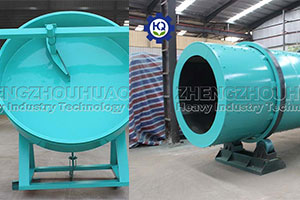
In organic fertilizer production lines, rotary drum granulators and disc granulators are two common types of equipment. The fertilizer granules they produce differ in shape, strength, suitability, and other aspects.
1.Rotary Drum Granulator Granule Characteristics
Shape: Spherical or near-spherical, relatively smooth surface.
Strength: Higher, good compressive resistance, less prone to breaking.
Size: Typically 2-5mm, with good uniformity.
Suitable Materials: Good for high-viscosity materials like organic fertilizer and compound fertilizers.
Process: Uses a rolling agglomeration principle. Steam or binders can be added to improve the granulation rate.
2.Disc Granulator Granule Characteristics
Shape: Approximately spherical, but surface is slightly rougher.
Strength: Moderate, suitable for slow-release fertilizer production.
Size:Typically 1-4mm; particle size can be controlled by adjusting the disc tilt angle.
Suitable Materials: Good for powdery organic fertilizers and microbial fertilizers.
Process: Relies on centrifugal force and gravity for self-agglomeration. Granulation rate is slightly lower but energy consumption is smaller.

3.Application Scenarios
Large-Scale Continuous Production: Rotary drum granulators are preferred for higher efficiency and more uniform granules.
Small or Medium Organic Fertilizer Plants: Disc granulators are more economical and practical.
Special Fertilizer Needs: Choose rotary drum for high-hardness granules; choose disc for slow-release fertilizers.
In summary, both rotary drum granulators and disc granulators have their advantages. The choice depends on factors like production needs, material properties, and budget.